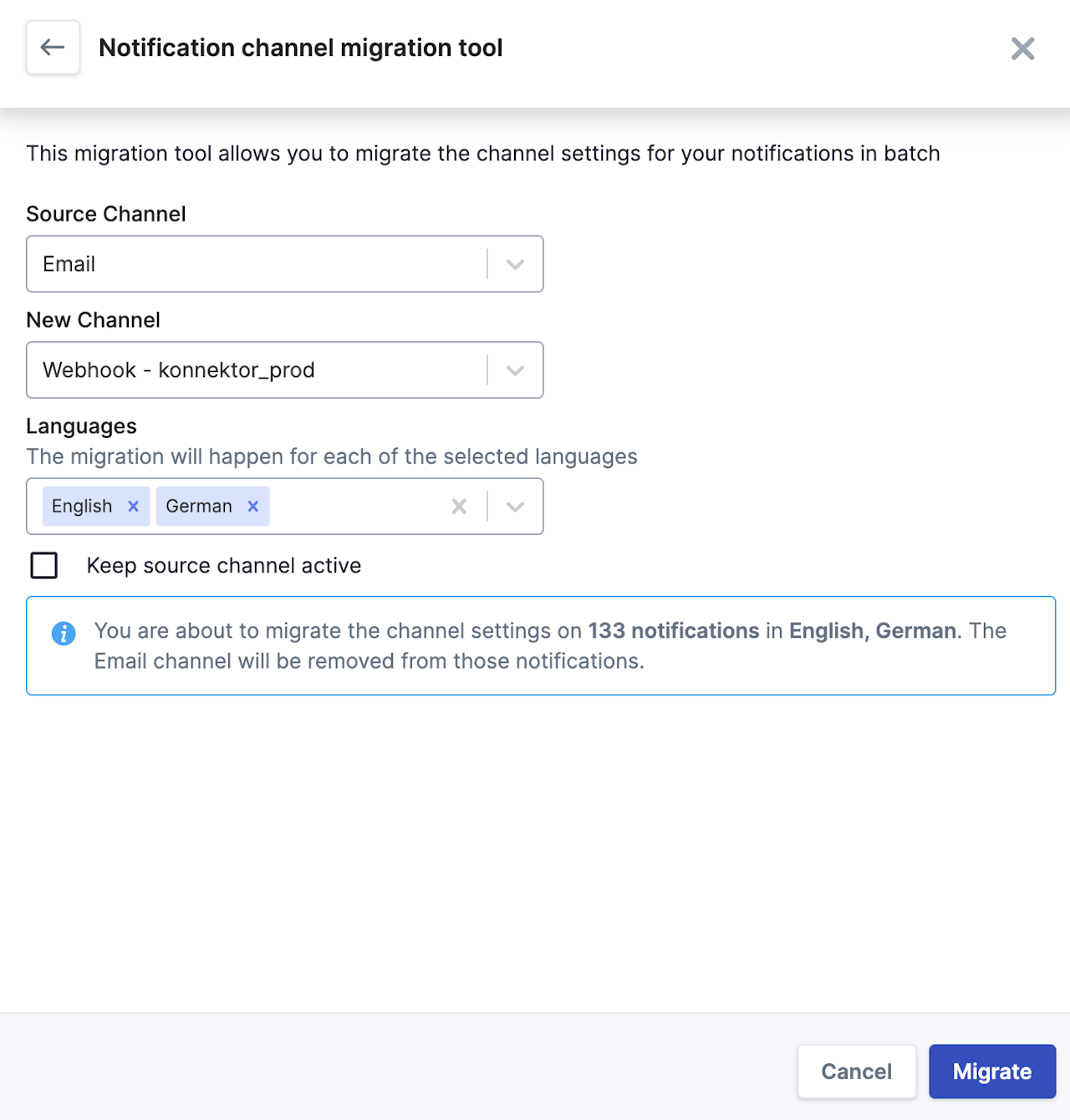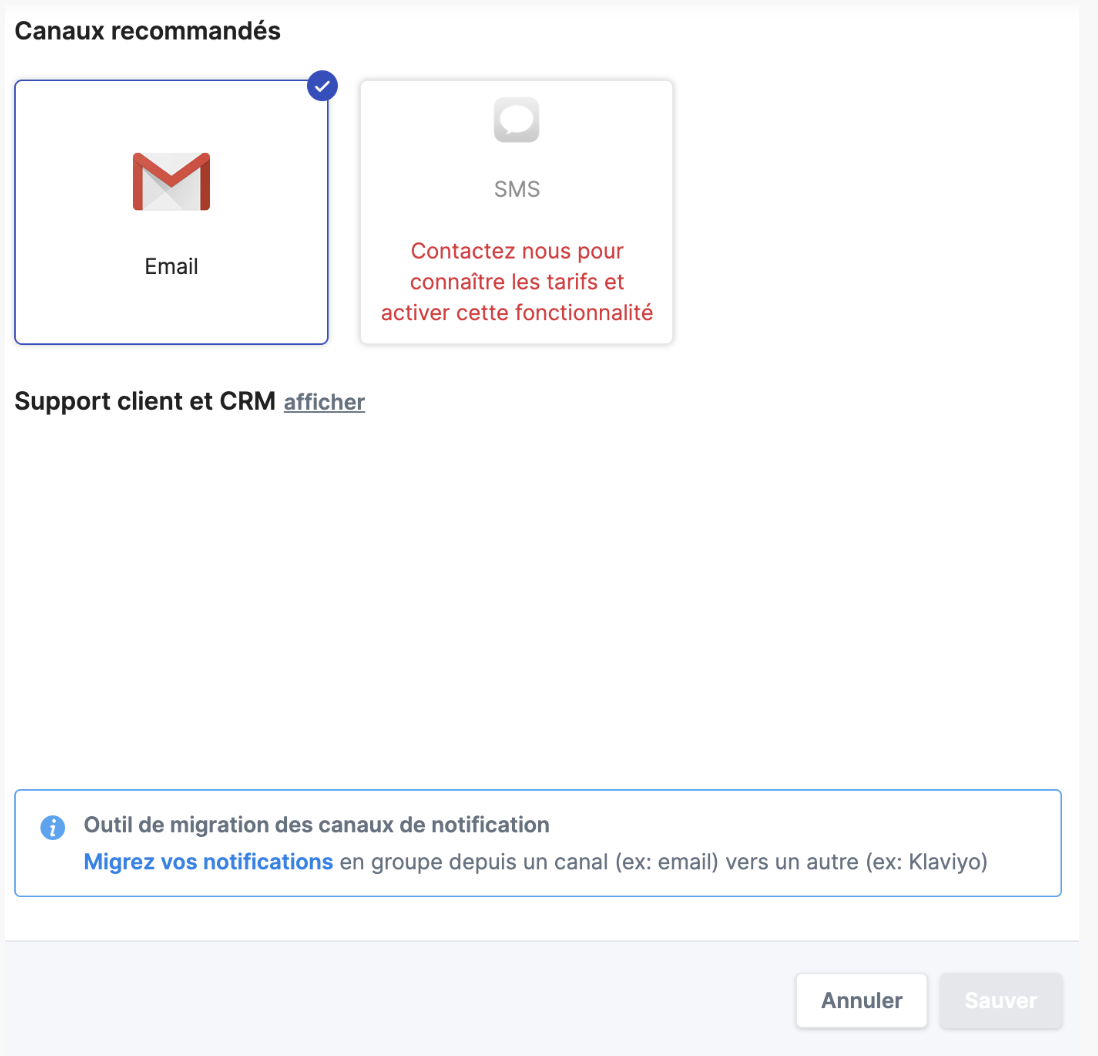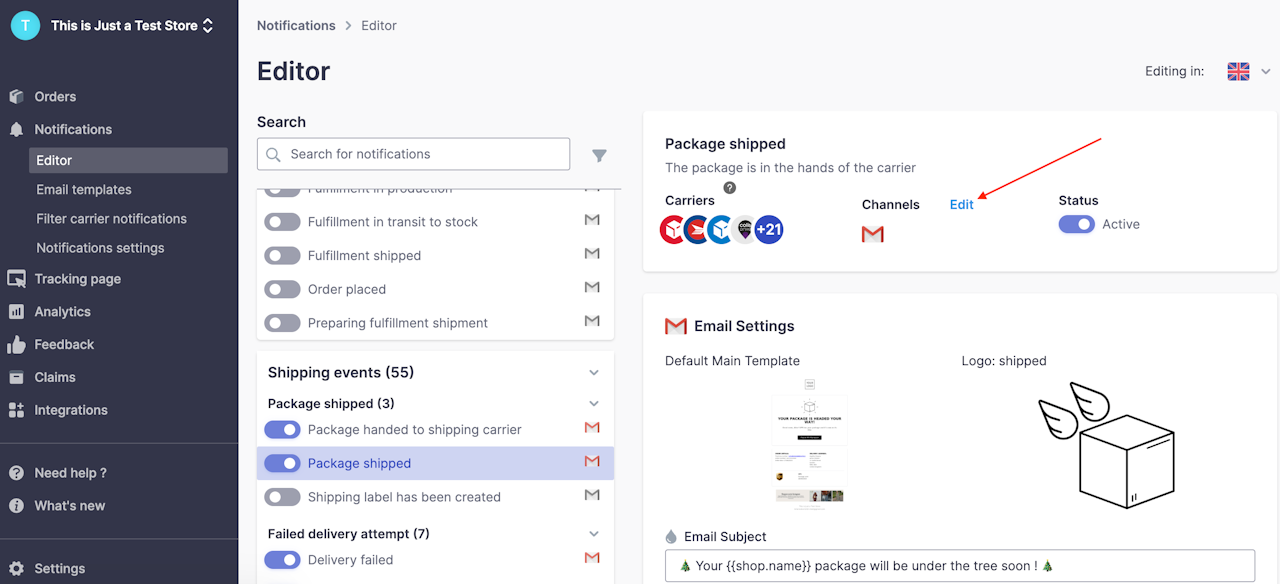
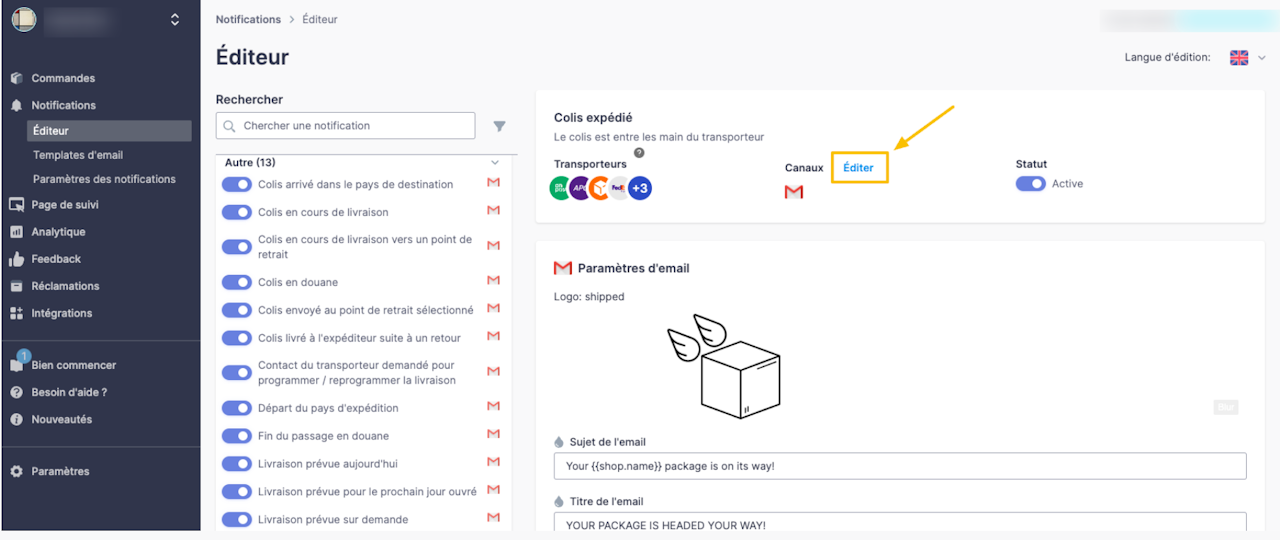
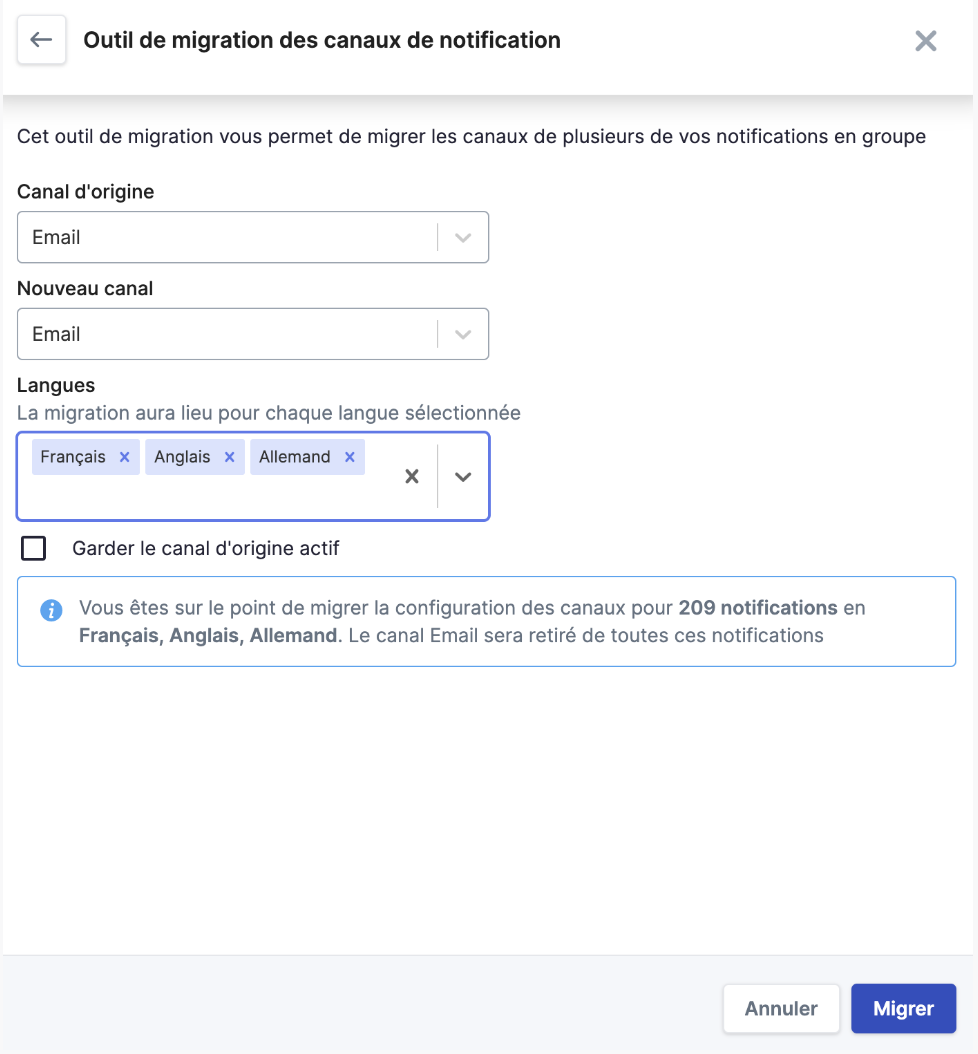

Notification channel migration
When is it used?
Typical case: a client is using our Klaviyo integration and needs to migrate the sending of notifications to Klaviyo.
This involves deactivating the e-mail channel and activating the Klaviyo channel for all notifications.
This work, done manually, can be tedious. All the more so if you've enabled multiple languages!
This tool lets you migrate all your notifications from one channel to another in a single click.
How does it work?
It's easy!
In the "Editor" tab of "Notifications", click on "Edit" next to "Channels" (see image on left).
After clicking on "Edit", at the bottom of the popup, you will find a "Notification channel migration tool" hyperlink (see the second carousel image).
Clicking on the "Migrate your notifications" hyperlinks opens a new window asking you to indicate which channel to migrate and under what conditions (see the third carousel image).
And finally, more detail on the last stage (third carousel image):
Source channel: This is the channel from which notifications will be migrated. These notifications are the "source notifications". For example: If "email" is selected, this means that all notifications that currently have the selected email channel will be migrated.
New channel: This is the channel that will be activated on source notifications. For example: If "Klaviyo" is selected, the Klaviyo channel will be added to the channel list of all source notifications.
Languages: If you send notifications in several languages, you can decide which languages you want to migrate. Migration will iterate language by language. For each language selected, it will find the source notification and activate the new channel.
Keep source channel active: If this option is ticked, the source channel will remain in the channel list for all source notifications after the migration. In other words, the source notifications will have both the source and new channel active. If unticked, the source channel will be removed from the channel list.

Comment ça marche ?
Comment ça marche ?
Très bonne question ! Spoiler : c'est facile
Dans l'onglet "Éditeur" (Notifications), en cliquant sur "Éditer" au niveau de "Canaux (voir l'image de gauche).
Après avoir cliqué sur "Éditer", vous trouverez en bas de la fenêtre un lien "Outil de migration des canaux de notifications".
En cliquant sur "Migrez vos notifications", une nouvelle fenêtre s'ouvre vous demandant d'indiquer le canal à migrer et selon quelles conditions.

Et enfin, un petit lexique
Canal d'origine : C'est le canal à partir duquel les notifications vont être migrées. Ces notifications sont les "notifications sources".
Par exemple : Si "email" est sélectionné, cela signifie que toutes les notifications qui ont actuellement le canal email sélectionné seront migrées.
Nouveau canal : C'est le canal qui va être activé sur les notifications sources.
Par exemple : Si "Klaviyo" est sélectionné, le canal Klaviyo sera ajouté à la liste des canaux de toutes les notifications sources.
Langues : Si vous envoyez des notifications en plusieurs langues, vous pouvez décider des langues pour lesquelles vous souhaitez effectuer la migration. La migration va itérer langue par langue. Pour chaque langue sélectionnée, elle trouvera la notification source et activera le nouveau canal.
Garder le canal d'origine actif : Si cette option est cochée, le canal source restera dans la liste des canaux de toutes les notifications sources après la migration. Cela signifie qu'après la migration, les notifications sources auront à la fois le canal source et le nouveau canal actif sélectionnés. Si elle n'est pas cochée, le canal source sera supprimé de la liste des canaux des notifications.


